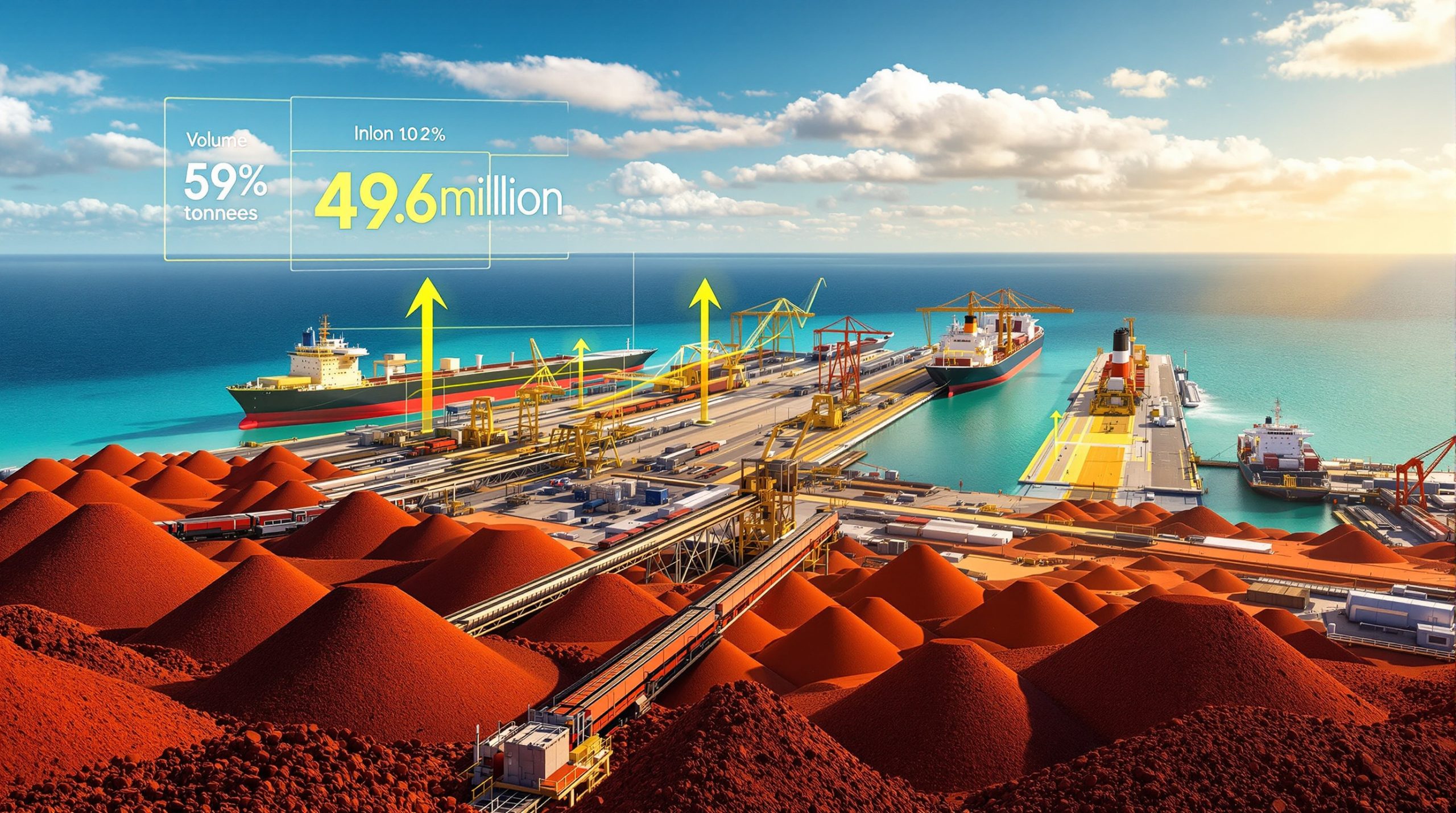Understanding Copper Cathode Premiums Amid US Tariff Uncertainty
The global copper cathode market is experiencing significant regional disruptions as uncertainty surrounding potential US tariffs creates ripple effects throughout international trade flows. With premiums shifting dramatically across different regions, market participants are navigating unprecedented volatility while trying to anticipate the outcomes of ongoing Section 232 investigations. Moreover, global copper market insights continue to shape trading strategies as the situation evolves.
The Global Copper Cathode Market Landscape
The copper cathode market currently presents a fragmented picture with regional premiums moving in opposite directions. US premiums have fallen sharply to 10.5-11.5 cents per pound (approximately $231-254 per tonne) as of April 15, marking a significant 12.5% decrease from the previous assessment of 12-13.5 cents per pound on April 8.
In stark contrast, European premiums are rising across all major trading hubs:
- Germany: $210-245 per tonne (up from $190-225)
- Leghorn: $170-190 per tonne (up from $160-180)
- Rotterdam: $170-190 per tonne (up from $160-180)
Meanwhile, Asian markets remain remarkably stable despite the global turbulence, with Shanghai Grade A cathode premiums holding steady at $85-105 per tonne on a cif basis, and Southeast Asian premiums maintaining a narrow range of $90-95 per tonne.
"The arbitrage is distorting the market tremendously. It's just not business as usual, to put it mildly," noted one US trader, highlighting how LME/CME arbitrage volatility has reached unprecedented levels, swinging between $600-1,730 per tonne and creating severe market distortions.
Supply-demand imbalances have emerged as US buyers stockpile material in anticipation of potential tariffs, creating oversupply in America while simultaneously draining European inventories to critical levels. This redirection of material has left European warehouse stocks below 50,000 tonnes—a five-year low.
How Are US Tariff Concerns Affecting Copper Markets?
The ongoing Section 232 investigation into US copper imports remains the primary driver of market uncertainty. While the official conclusion is scheduled for November 22, 2025, market rumors suggest an earlier decision might be forthcoming, prompting preemptive action from traders and consumers.
Although copper cathodes currently remain exempt from tariffs, the mere possibility of future duties has triggered significant market distortions. Preemptive stockpiling has created a roughly 20% oversupply of non-COMEX brands in the US market, while simultaneously stripping European inventories.
"Consumers are skittish about buying given the volatility in the price and the arbitrage," explained a second US trader, highlighting how buyer hesitation has virtually halted spot market activity in North America.
The extreme arbitrage volatility between LME and CME has further complicated market dynamics. At its peak, the arbitrage reached $1,730 per tonne, creating a powerful economic incentive to redirect material to the US market. Even during troughs of around $600 per tonne, the arbitrage remained sufficient to disrupt normal trade flows. Understanding copper prices dynamics is essential for navigating these challenging market conditions.
US Copper Market: Declining Premiums and Market Distortion
The US copper market has reached what many traders describe as a virtual standstill in spot business, with premiums on copper cathodes amid US tariffs dropping to 10.5-11.5 cents per pound as of April 15. This represents a substantial decline from the previous assessment of 12-13.5 cents per pound just one week earlier.
Perhaps more telling than the headline premium drop is the unusually wide range of price inputs in the market. Some transactions reported premiums as low as 0.5 cents per pound—a dramatic 95% discount from standard rates—reflecting distressed sales of oversupplied non-COMEX approved brands.
"No one is interested in buying… quotes at this time are speculative given the absence of activity," noted a US trader, highlighting the paralysis in normal market functions.
The market disruption stems from several interconnected factors: extreme arbitrage volatility, preemptive stockpiling ahead of potential tariffs, and a sharp divergence between COMEX-approved and non-approved brands. Non-COMEX brands now trade at 30-50% discounts due to oversupply, creating a two-tier market.
Liquidity has evaporated as buyers adopt a wait-and-see approach, hoping for premium corrections once the tariff situation clarifies. This buyer hesitation has compressed transaction volumes to levels not seen since the early pandemic period.
European Copper Market: Supply Tightness Driving Premium Increases
While the US market grapples with oversupply, European premiums are climbing due to critical supply shortages. Premium increases have been recorded across all European hubs, with the German premium now standing at $210-245 per tonne, up from $190-225 previously.
"There is no copper, and there are no inventories, so people are struggling to find units," stated one European producer, highlighting the severity of the situation. Industry participants describe sourcing copper cathodes in Europe as "virtually impossible" in the current environment.
Two key factors are driving the European supply crunch. First, material is being "sucked into the US" market due to favorable arbitrage conditions, redirecting shipments that would normally supply European consumers. Second, relatively low LME prices below $9,000 per tonne have triggered increased buying activity as consumers seek to secure material at favorable rates.
The supply tightness has forced some desperate German buyers to pay premiums as high as $245 per tonne for urgent shipments—a level that would have been unthinkable just months ago. The situation is exacerbated by European smelter capacity constraints and higher energy costs compared to US and Asian operations. Recent copper smelting analysis indicates that production capacity remains constrained in several key regions.
One European producer warned: "There is a [big danger] that the premiums could swing back" once US tariff issues resolve, suggesting the current premium spike may prove temporary.
Asian Copper Market: Stability Amid Global Uncertainty
In contrast to the turbulence seen in Western markets, Asian copper premiums have remained remarkably stable. Grade A cathode premiums on a cif Shanghai basis held steady at $85-105 per tonne, while in-warehouse Shanghai premiums maintained their $70-90 per tonne range.
EQ cathode premiums saw only a minor adjustment to $55-65 per tonne from the previous $53-67 per tonne assessment, demonstrating the relative calm in Asian markets despite global disruptions.
"The market has been cooling down a bit after arbitrage import conditions provided little incentive," explained one Shanghai trader, pointing to the widening import arbitrage loss of $80.50 per tonne (compared to $54.99 previously) as a key factor limiting trading activity.
The stability in Asian premiums reflects several regional factors, including China's substantial state reserves which can be deployed to cushion market shocks, and a more balanced regional supply-demand picture. The negative arbitrage conditions have actually protected the Asian market from the extreme volatility seen elsewhere by reducing economic incentives for material redirection.
Limited spot trading and offers characterize the current Asian market environment, with most participants content to maintain existing positions while monitoring developments in US tariff investigations.
What Happens When US Tariff Decisions Are Finalized?
Market experts anticipate significant corrections once US tariff decisions are finalized. European premiums could potentially drop 15-20% as material flows normalize and the current supply tightness eases.
"There is a [big danger] that the premiums could swing back," warned one European producer, highlighting the risk of dramatic premium reversals in Europe once the artificial demand created by US stockpiling subsides.
The redistribution of global copper flows is likely to follow tariff resolution, with US oversupply potentially shifting toward Asian markets if tariffs are implemented, or returning to more balanced levels if tariffs are avoided. Historical precedent from the 2018 steel tariffs suggests premium volatility of approximately 12% over a six-month period following policy clarification.
Despite the current market turbulence, producer confidence in fundamental copper demand remains strong. The growing renewable energy sector and electric vehicle production continue to support long-term copper demand projections, with World Bank forecasts indicating sustained growth through 2026-2030. Many investors are exploring copper investment strategies to capitalize on the metal's essential role in the clean energy transition.
Market normalization timelines suggest premiums may take 3-6 months to stabilize after the Section 232 investigation concludes, with continued monitoring of the investigation timeline remaining crucial for market participants.
Regional Market Comparison: Premiums and Trading Conditions
The current premium differentials across regions tell a compelling story of market distortion:
- US: 10.5-11.5 cents per lb (approximately $231-254 per tonne)
- Europe: $170-245 per tonne (varying by location)
- Asia: $85-105 per tonne (cif Shanghai)
- Southeast Asia: $90-95 per tonne (cif)
These differentials highlight how arbitrage-driven material redirection has created artificial scarcity in Europe while generating oversupply in the US. "The EU is tight because of stuff heading to the US," confirmed one European consumer.
Trading activity presents equally stark contrasts across regions:
- US: Virtually no spot activity, with buyers in wait-and-see mode
- Europe: Limited trading with severe supply constraints
- Asia: Reduced activity with stable premiums
Logistical costs further complicate the picture, with transatlantic shipping adding $30-50 per tonne to European premiums. Tax implications of re-routing cargoes via third countries have also emerged as a consideration for some traders seeking to optimize costs amid the uncertainty. According to recent market analysis, the future trajectory of premiums remains highly unpredictable as trade policies evolve.
Expert Insights on Copper Market Volatility
Industry participants offer valuable perspectives on the current market disruption. A survey of traders indicates that 70% expect volatility to persist for at least six months, highlighting the extended timeline for market normalization.
"The arbitrage is sucking material into the US… premiums aren't plausible," noted one US trader, underscoring how artificial market conditions have distorted traditional pricing mechanisms.
Some producers have adopted sophisticated hedging strategies to navigate the uncertainty, using LME options to lock in floors between $9,200-9,500 per tonne while maintaining exposure to potential upside.
"The arb is distorting the market tremendously. It's just not business as usual, to put it mildly," emphasized another trader, capturing the extraordinary nature of current market conditions.
Industry analysts point to algorithmic trading as an exacerbating factor in arbitrage volatility, with automated systems amplifying price movements and creating feedback loops that further destabilize markets. The global copper supply dispute related to Cobre Panama further complicates the supply picture, adding another layer of uncertainty to an already volatile market.
FAQ: Copper Cathode Premiums and Tariffs
What is driving the current volatility in copper cathode premiums?
The primary driver is uncertainty surrounding potential US tariffs through the ongoing Section 232 investigation. This has led to preemptive stockpiling in the US, creating regional imbalances. Extreme arbitrage swings between major exchanges (reaching $600-1,730 per tonne) have further disrupted normal trading patterns.
How are different regions responding to the current market conditions?
The US market is experiencing oversupply and reduced spot activity with declining premiums on copper cathodes amid US tariffs (10.5-11.5 cents per pound). European markets face severe supply tightness with rising premiums across all trading hubs ($170-245 per tonne). Asian markets show relative stability with limited trading activity and steady premiums ($85-105 per tonne cif Shanghai).
When might the copper market stabilize?
Market normalization is likely to follow the conclusion of the Section 232 investigation, officially scheduled for November 2025, though rumors suggest an earlier decision. Once tariff clarity emerges, experts anticipate a 3-6 month adjustment period before premiums stabilize. Producer sources indicate that despite short-term volatility, long-term fundamentals for copper demand remain strong, supported by renewable energy and electric vehicle production growth. According to Morgan Stanley's analysis, these trade tensions may actually support higher copper prices in the medium term.
Disclaimer: This article contains market analysis and forward-looking statements based on current information. Actual market developments may differ from projections. Readers should conduct their own research before making business or investment decisions related to copper markets.
Want to Be First to Know About Major ASX Mineral Discoveries?
Discovery Alert's proprietary Discovery IQ model instantly notifies you when significant mineral discoveries are announced on the ASX, giving you the market edge to capitalise on potential opportunities before the wider market responds. Explore how historic discoveries have generated exceptional returns by visiting Discovery Alert's discoveries page and start your 30-day free trial today.




